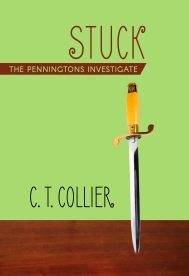 Thank you, Raimey Gallant for organizing the #AuthorToolboxBlogHop.
Thank you, Raimey Gallant for organizing the #AuthorToolboxBlogHop.
This is a monthly blog hop on the theme of resources/learning for authors: posts related to the craft of writing, editing, querying, marketing, publishing, blogging tips for authors, reviews of author-related products, anything that an author would find helpful.
To continue hopping through other great blogs in the monthly #AuthorToolboxBlogHop or to join, just hop on over to Ramey Gallant!
This month, I’m going to focus on what I’ve learnt from working with beta readers.

When I finished the first draft of my first novel, Descent, I was exhilarated and terrified. Exhilarated because I’d accomplished my dream of writing a novel, and terrified because I now had to share it with someone.
But who?
My lucky husband got to be my first beta reader. He understood how important my story was to me. He’d be kind yet helpful. So I took a deep breath and hit the print button.
I couldn’t be in the same room with him as he read. That was just too stressful.
Once he finished, he gave me one of the most useful pieces of advice that I still use today. It came in the form of a question.
“Do you know you start every scene in a doorway?”
I hadn’t noticed that. His question made me do a full rewrite of every scene, looking at the opening. This is when I discovered the term in medias res — start in the middle of the action.
Now, before I share my story with anyone, I check the beginning of each scene and choose the opening carefully. I try to open with a hook for each scene.
As the years have gone by, I’ve had many beta readers and received a lot of valuable advice, comments, and questions. I couldn’t write the way I do without these precious people.
What’s a Beta Reader?
A beta reader is a person who reads your manuscript before it’s published and provides you with feedback on your story. The feedback is usually on characters, plot, and settings. (Although you may get comments on copyediting and proofreading, too.)
A helpful beta reader gives you honest feedback, positive or negative, that you use to improve your story.
An ineffective beta reader says, “That’s a nice story. I liked it.” While that feels good, it doesn’t help you write a better story.
Tips for Getting Useful Feedback
Convincing friends to give you honest feedback is difficult. People who care about you usually don’t want to hurt your feelings and may be worried about beta reading.
Questions like “What if I don’t like the story?” or “How will I tell you if I find something I don’t like?” may swirl around their heads while they’re thinking of a way to say no.
Make sure your readers understand you won’t be hurt or offended by negative feedback. Feedback on what’s not working is the only way for you to tell a better story.
To make it easy for your beta readers to know what you want, provide a list of specific questions or instructions. This will help your reader know what you want from them.
I ask beta readers to do or answer the following:
- Mark anywhere you skim. This is an easy way to know that the writing is boring.
- Did you get confused on who a character was? Maybe you need more clues or dialogue tags.
- Did you lose track of who was speaking? I like to write with minimal dialogue tags, so this is critical.
- Note anytime you suspect a character of being the villain or know the ending. This helps to determine if you’ve done enough to too much foreshadowing.
- Mark each passage where you stopped reading. Get your beta readers to mark this each time, even it was to have dinner, go to work, etc. If all your beta readers put the book down at the same passage, there may be a problem with the story.
- Did you notice any story inconsistencies? To help your beta reader, give them an example of what you mean. I read a story where a dog was left at home in one scene, and in the next scene, the dog was still with the owner. The author had forgotten where the dog was.
- Avoid asking for copy editing or proofreading from beta readers. It’s ok if your readers notice errors and point them out, but what you want at this stage is input on your story, not on the grammar or typos.
Make Your Beta Reader Feel Special

Once you’ve put a lot of time into finding helpful beta readers, you want to keep them for your next book.
The first time a beta reader gives you negative feedback, thank them. If you make the suggested change, let them know. A beta reader will put a lot of effort into reading your story and seeing that their comments resulted in changes can be very satisfying.
When you ask someone to beta read, make it easy for the author by asking what format he/she would like to receive the manuscript in. I offer a PDF file first, but some prefer a printed copy and others mobi. Some like to receive manuscripts in .docx format as it’s easy to convert and read on a Kindle. I try to send the manuscript in the format the beta reader prefers. I believe it’s a sign of respect for the person.
In the acknowledgment section of your published book, thank your beta readers. Mine all love to see their names in the book.
Make your beta reader feel really special and send them a signed copy of your book once it’s published.
Let us know if you have any suggestions for working with beta readers. We’d love to hear from you!
Perform a Story Edit Before Sharing with Beta Readers
Fictionary is online software that simplifies story editing. Fictionary will help you evaluate your story on a scene-by-scene basis. You’ll be able to focus on problem areas in your manuscript and improve it quickly. Then your beta readers will be impressed!
Why not check out Fictionary’s free 14-day trial and tell better stories? We don’t ask for a credit card until you’re ready to pay, so there’s no risk.
Thanks for reading!



 C. T. Collier was born to solve logic puzzles, wear tweed, and drink Earl Grey tea. Her professional experience in cutthroat high tech and backstabbing higher education gave her endless opportunity to study intrigue. Add to that her longtime love of mysteries, and it’s no wonder she writes academic mysteries that draw inspiration from traditional whodunits. Her setting is entirely fictional: Tompkins College is no college and every college, and Tompkins Falls is a blend of several Finger Lakes towns, including her hometown, Seneca Falls, NY
C. T. Collier was born to solve logic puzzles, wear tweed, and drink Earl Grey tea. Her professional experience in cutthroat high tech and backstabbing higher education gave her endless opportunity to study intrigue. Add to that her longtime love of mysteries, and it’s no wonder she writes academic mysteries that draw inspiration from traditional whodunits. Her setting is entirely fictional: Tompkins College is no college and every college, and Tompkins Falls is a blend of several Finger Lakes towns, including her hometown, Seneca Falls, NY